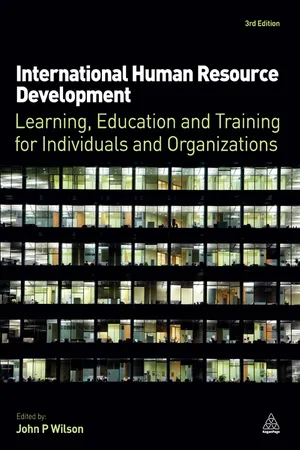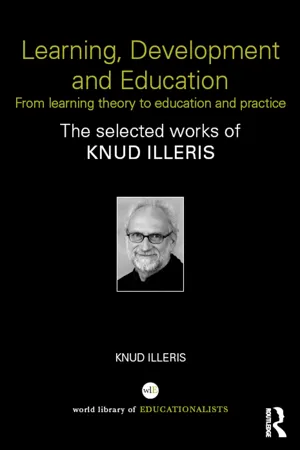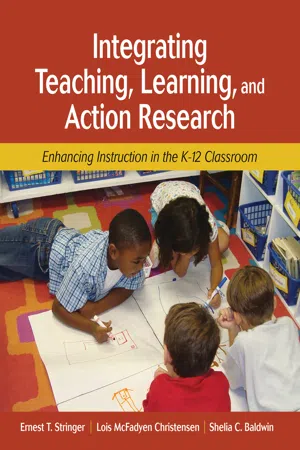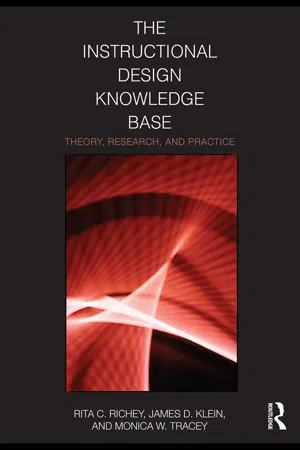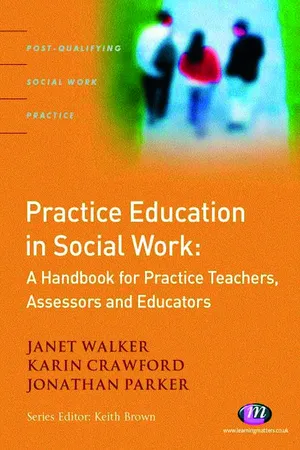Psychology
Learning Theory
Learning theory in psychology refers to the study of how individuals acquire new knowledge, behaviors, and skills. It encompasses various perspectives, such as behaviorism, cognitive psychology, and social learning theory, to understand the mechanisms and processes involved in learning. Key concepts include conditioning, reinforcement, observational learning, and information processing, which contribute to our understanding of how learning occurs in different contexts.
Written by Perlego with AI-assistance
Related key terms
8 Key excerpts on "Learning Theory"
- eBook - ePub
- Jim Gould, Jodi Roffey-Barentsen(Authors)
- 2018(Publication Date)
- SAGE Publications Ltd(Publisher)
6 Learning: Theory and PracticeLearning means different things to different people, so a number of different theories as to the nature of learning and the learning process exist. A particular view of learning leads to a particular way of teaching; it is important therefore that, as teachers, we have a working knowledge of these different theories and their application. This chapter explores the main theories of learning that inform and underpin our everyday practice. In the spirit of James Cask Penney’s (n.d.) assertion that ‘Theory is splendid but until put into practice, it is valueless’, the implications for practice will be examined as each theory is discussed.When you have completed this chapter you will be able to:- describe the following theories of learning and recognise the ways in which they inform practice:
- behaviourism
- cognitivism
- information processing theory
- neuro-cognitive approaches
- social learning
- humanism
- andragogy.
The nature of theory
First, a cautionary note about theory. Popper (1959/1992: 51) suggests that theories are ‘nets cast to catch what we call “the world”, to rationalise, to explain and to master it’. Achieving such mastery, however, initially involves simplification and generalisation and so it is important to bear in mind whilst reading this chapter that theory, by its very nature, rarely provides a complete match with reality. Teaching and learning invariably don’t fit neatly into the boxes that theory provides for us. What those boxes do provide, however, are reference points against which we can compare and analyse practice. The third stage of Kolb’s model of experiential learning, ‘abstract conceptualisation’, informs us that to learn and benefit from the experiences we have, we need to analyse and make sense of them. Theory provides the tool with which to do this. Theory can guide future practice or lead to a better understanding of current practice, enabling us to become more effective in what we do. - eBook - ePub
International Human Resource Development
Learning, Education and Training for Individuals and Organizations
- John P. Wilson(Author)
- 2012(Publication Date)
- Kogan Page(Publisher)
Any process that in living organisms leads to permanent capacity change and which is not solely due to biological maturation or ageing. (Illeris, 2007: 3)A process by which an individual assimilates information, ideas and values and thus acquires knowledge, know-how, skills and/or competences – learning occurs through personal reflection, reconstruction and social interaction. Learning may take place in formal, non-formal or informal settings.(Cedefop, 2008: 111) Learning can be defined as a relatively permanent change in behaviour that results from experience. (Klein, 2009: 2) Learning is an enduring change in behaviour, or in the capacity to behave in a given fashion, which results from practice or other forms of experience. (Schunk, 2009: 2) As can be seen, there is no complete agreement among these definitions; some place emphasis on behavioural change, others on cognition, and others experience. Drawing from the preceding discussion:Learning is a relatively permanent change of knowledge, attitude or behaviour occurring as a result of formal education, training or development, or as a result of informal experiences.Therefore, to gain more understanding we will now consider learning from six main perspectives: behaviourism, cognitivism, constructivism, social learning, humanism and neurology.Behaviourism
The term behaviourism derives from psychologists who focused on observable behaviour rather than people’s self-reported internal thoughts and experiences, which are extremely difficult to measure and quantify. Early research tended to focus on two main types of behavioural conditioning: classical and operant. Classical conditioning is exemplified by the well-known experiments conducted by Pavlov, who rang a bell shortly before he fed his dogs. He noticed that the dogs associated the ringing of the bells with the arrival of food and that they began salivating when the bell was rung and before the food had arrived. Essentially, this process involves a stimulus and a response (Figure 3.1 - eBook - ePub
Learning, Development and Education
From learning theory to education and practice
- Knud Illeris(Author)
- 2018(Publication Date)
- Routledge(Publisher)
Since the last decades of the nineteenth century, many theories and understandings of learning have been launched. They have had different angles, different epistemological platforms and a very different content. Some of them have been overtaken by new knowledge and new standards, but in general we have today a picture of a great variety of learning theoretical approaches and constructions, which are more-or-less compatible and more-or-less competitive on the global academic market. The basic idea of the approach to learning presented in this chapter is to build on a wide selection of the best of these constructions, add new insights and perspectives and in this way develop an overall understanding or framework, which can offer a general and up-to-date overview of the field.Learning can broadly be defined as any process that in living organisms leads to permanent capacity change and which is not solely due to biological maturation or ageing (Illeris 2007, p. 3 ). I have deliberately chosen this very open formulation because the concept of learning includes a very extensive and complicated set of processes, and a comprehensive understanding is not only a matter of the nature of the learning process itself. It must also include all the conditions that influence and are influenced by this process. Figure 1.1 shows the main areas which are involved and the structure of their mutual connections.Figure 1.1 The main areas of the understanding of learning.On the top I have placed the basis of the Learning Theory, i.e. the areas of knowledge and understanding which, in my opinion, must underlie the development of a comprehensive and coherent theory construction. These include all the psychological, biological and social conditions which are involved in any learning. Under this is the central box depicting learning itself, including its processes and dimensions, different learning types and learning barriers, which to me are the central elements of the understanding of learning. Further there are the specific internal and external conditions which are not only influencing but also directly involved in learning. And finally, the possible applications of learning are also involved. I shall now go through these five areas and emphasise some of the most important features of each of them. - eBook - ePub
Integrating Teaching, Learning, and Action Research
Enhancing Instruction in the K-12 Classroom
- Ernest T. Stringer, Lois McFadyen Christensen, Shelia C. Baldwin(Authors)
- 2009(Publication Date)
- SAGE Publications, Inc(Publisher)
2Learning Theory
T he purpose of this chapter is to provide greater understanding of the complexity of student learning processes. It signals the wide range of factors teachers must take into account in their classroom teaching. Insights are drawn from the following theoretical perspectives:- Cognitive and developmental theories that focus on
- Ways information is processed, learned, and transferred
- Learner adaptation
- Stages of development of knowledge dispositions (Piaget)
- Social Learning Theory (Vygotsky)
- Inquiry, problem solving, and discovery that change learner cognitive structures (Bruner)
- Multiple intelligences through which humans process information (Gardner)
- Brain theory and its focus on biological propensity (Caine and Caine)
- Social Learning Theory that focuses on social imitation and observation (Bandura)
- Inquiry learning that focuses on learning through problem solving within the social world of the learner (Dewey)
- Postmodern perspectives that highlight the need to take into account the systems of meaning—social, cultural, and political—through which learners make sense of their environment
- Critical theory that shows how
- Knowledge and understanding based on a teacher’s history of experience is imposed on students in disempowering ways
- Teachers need to take advantage of the cultural capital of the learner (Freire)
- Democracy and social justice are learned in classrooms
Each of these theoretical perspectives suggests the need for teachers to approach the act of teaching as a process of inquiry to enhance their professional lives and provide greater satisfaction for their students.MS . MC KINLEY ’S SOCIAL STUDIES LESSONMs. McKinley walked down the hill from the middle school to the assisted living care center to set up e-mail accounts so that her sixth graders could communicate with the elders there (LOOK). The sixth graders created Web pages about themselves so the residents could get to know them. They included interview questions about their histories in terms of family and so on. The residents e-mailed back and included photographs of family members and themselves, some of the benchmarks in their lives, significant historical occurrences, favorite music, service interests, military service if pertinent, and other areas of relevant information (ACT). Prior to the interviews, the sixth-grade students brainstormed interview questions; some questions were grand tour questions and others were mini-tour questions (THINK) (Spradley, 1980). - eBook - ePub
Aptitude, Learning, and Instruction
Volume 2: Cognitive Process Analyses of Learning and Problem Solving
- Richard E. Snow, Pat-Anthony Federico, William E. Montague, Richard E. Snow, Pat-Anthony Federico, William E. Montague(Authors)
- 2021(Publication Date)
- Routledge(Publisher)
In trying to develop instructionally relevant research on individual difference and ATIs, several things need to be kept in mind. Regardless of the extent to which computer-assisted instruction and instructional systems where the student works independently develop, a large amount of our instructional effort will continue to be spent in group instruction under the supervision of a live teacher. The reasons for this include feasibility—at least in the foreseeable future—cost, and the simple fact that certain objectives best lend themselves to, and may even require, group instruction. Thus, it is important for us to pay attention to variables that reflect the dynamics that exist in group instruction with a live teacher. This concern, however, should not be viewed as being limited only to group instruction. Many of the instructional variables that are reflected in the dynamics of live, group instruction also operate in other types of instructional settings as well, such as the writing of text materials, developing films and videotapes, computer-assisted instruction, and so forth. All instruction, including instruction carried on by the use of previously prepared instructional materials in the absence of a live teacher, involves the interaction of at least two people. In one case all parties to the instructional act are physically present, whereas in the other case the instructor’s influence is more remote. The form and nature of the interaction between teacher and student may differ widely, but the reality of the relationship is still there.Learning Theory and Cognitive Psychology
The shift in emphasis during the last decade from research on learning, primarily from a behavioristic S-R perspective, to a concern for cognitive processes and information processing has had a number of important consequences. This new emphasis on cognitive psychology, however, has been concerned primarily with describing the various stages involved in the information-processing sequence and in determining the characteristics of these stages rather than with learning per se (i.e., concern for variables responsible for changes in behavior whether internal or external).Although cognitive researchers and theorists have sometimes talked about learning, most have implicitly viewed learning as being synonymous with the storage and retrieval of new information or strategies. Several researchers (Bransford & Franks, 1976; Greeno, 1974) have been somewhat more explicit by stating that learning is, for all practical purposes, the same thing as comprehension; and Norman, Gentner, and Stevens (1976) have defined learning in terms of schemata modification. So far, however, little work has been done on developing systematic, lawful, and empirically based hypotheses about variables that influence changes in comprehension or the modification of schemata. - eBook - ePub
- Nick Rushby, Dan Surry(Authors)
- 2016(Publication Date)
- Wiley-Blackwell(Publisher)
Observing and measuring learners’ behaviors or performances allowed behaviorists to scientifically quantify the learning that occurred after specific stimuli (information or instructional programs) were presented. However, restricting one’s view of learning to elicited behaviors began to create dissatisfaction when attempting to explain certain complex behaviors (e.g., language acquisition, problem solving; Newby et al. 2011). For example, in many cases learners’ behaviors were the result of their abilities to mentally plan and organize given information in their minds—processes that could not be observed directly, but which, very clearly, impacted the performances that followed.By the mid-1950s, the limitations of behaviorism led to a search for new ways to explain human learning. During this same time period the procurement and use of the computer had become more widespread. Not only did the computer offer new ways to investigate human learning, it also supplied a useful metaphor for how the mind might work. As these trends came together, the development of the information processing view of human cognition began to receive attention. The impetus behind this perspective on learning was to go beyond simple external behaviors to focus more on how knowledge was internally acquired, retained, and recalled within human memory.Definition of learning. According to Mayer, an information processing perspective viewed learning as “… taking in information and building a mental representation in short-term (or working) memory, applying a series of cognitive processes to the representation, each of which transforms the representation in some way, and then storing the final result in long-term memory” (Mayer 2003, 138). As such, learning was thought to occur when an individual attends to a specific sensory input, and then encodes that information in a way that allows for easy retrieval and later use. In other words, in this perspective learning was defined as a change in memory (Ertmer and Newby 1993).Teacher role - eBook - ePub
The Instructional Design Knowledge Base
Theory, Research, and Practice
- Rita C. Richey, James D. Klein, Monica W. Tracey(Authors)
- 2010(Publication Date)
- Routledge(Publisher)
“Learning” is the relatively permanent change in a person’s knowledge or behavior due to experience. This definition has three components: (1) the duration of the change is long-term rather than short-term; (2) the locus of the change is the content and structure of knowledge in memory or the behavior of the learner; (3) the cause of the change is the learner’s experience in the environment rather than fatigue, motivation, drugs, physical condition, or psychological intervention. (p. 1040)While there are definitions of learning that reflect other points of view, in this chapter we will explore behavioral, cognitive, and social learning theories within the framework of the Mayer definition. In addition we will discuss ID applications stemming from each of these theories.Behavioral Learning Theory
Behavioral psychologists view learning as the ability to perform new behaviors; they focus on a stimulus-response approach to learning. Actions may be established by a researcher or, in applied situations, by a facilitator, teacher, or instructional materials. In these learning situations, there is an effort to create conditions which will enable the learner to demonstrate desired behaviors and perform them over a period of time.Here we will summarize the major principles of three key behavioral theories and then discuss their importance to ID. These theories are connectionism, classical conditioning, and operant conditioning.Connectionism
One of the original stimulus-response theories was developed by Edward L. Thorndike. His theory was a type of bond psychology, typically called connectionism. He saw learning as a trial and error process. One learns by making a response, receiving reinforcements if it is correct, and thereby making a connection.Thorndike’s most famous experiments dealt with hungry cats. The cats were placed in a closed box with food outside. The objective was for the cat to discover how to open the door in the box and find the food. At first, the cat’s behavior was random and time consuming; however, after accidentally finding the solution, later trials were much shorter (Guthrie, 1960). Results from these studies formed the basis of Thorndike’s theory of connectionism. - eBook - ePub
Practice Education in Social Work
A Handbook for Practice Teachers, Assessors and Educators
- Janet Walker, Karin Crawford, Jonathan Parker(Authors)
- 2008(Publication Date)
- Learning Matters(Publisher)
Figure 2.2 ). It is important to be aware, though, that each of these groups of theories work represents a continuum of models and approaches with extremes at each end. For example, the behavioural theories range from a simple model of reinforcement to models that enable exploration of a range of options or possible responses.Figure 2.2: Three groups of learning theoriesBehaviourist theories
Theories that fit in this group suggest that individuals learn by receiving stimuli and then responding to those stimuli, hence these theories give a clear cause and effect explanation of teaching. As a teacher you have an active role as you lead the learning by selecting the stimuli (or learning opportunity), by reinforcing the approved responses and by discouraging the ‘wrong’ responses. In other words, reward and punishment follow success and failure. B.F. Skinner (1904–90), in early work on behaviourism, proposed that the shaping of learning and the control of the process lay with the teacher. Behaviourist approaches, which are applied across a wide range of different levels, subject and skill areas, view knowledge or behaviours as either right or wrong. The role of the learner is a passive one, from this perspective.Social cognitive learning theories
Bandura (1965) developed this further and suggested that the learner has choice and some control, and that the learner does not simply respond automatically, but makes conscious decisions in the process. In this way, Bandura, it could be argued, began to consider the centrality of the learner in the process – the learner as being active in the process – and to recognise the possibility for creativity and individualisation. This group of theories is called cognitive because they emphasise the role of conscious thought processes in behaviour, and social because they stress the significance of learning with others and from others. With the perspective of the mind and brain being actively engaged in the learning process, these approaches also explain development of insight, different perspectives, levels of understanding and perception. Cognitive theories acknowledge gradual development of understanding, application, analysis and perception through learning, and consider that feedback and learner–other learners–teacher interactions are essential components of the learning process. Furthermore, as shown in Figure 2.2
Learn about this page
Index pages curate the most relevant extracts from our library of academic textbooks. They’ve been created using an in-house natural language model (NLM), each adding context and meaning to key research topics.

